Now India targets the Sun: Country launches new rocket on solar mission a week after becoming first to land on Moon’s South pole
Shortly after their emphatic success in becoming the first country to land near the moon’s south polar region, India has now launched its first space mission to study the sun.
The Aditya-L1 spacecraft took off Saturday aboard a satellite launch vehicle from South India’s Sriharikota Space Center on a quest to study the sun from a point about 1.5 million kilometers from Earth, known as L-1.
The rocket left a trail of smoke and fire as scientists clapped on Saturday, a live broadcast on the Indian Space Research Organization’s (ISRO) website revealed.
The Indian space agency later confirmed on social media platform X, formerly Twitter, that the satellite is now successfully in orbit.
The broadcast was watched by more than 860,000 viewers, as thousands gathered in a viewing gallery near the launch site to watch the launch of the probe, which aims to study solar winds that can create disturbances on Earth, commonly seen as auroras .
People watch as the PSLV XL rocket carrying the Aditya-L1 spacecraft launches Saturday from Satish Dhawan Space Center in Sriharikota

Students celebrate while watching the livestream of the launch of the PSLV XL rocket with the Aditya-L1 spacecraft
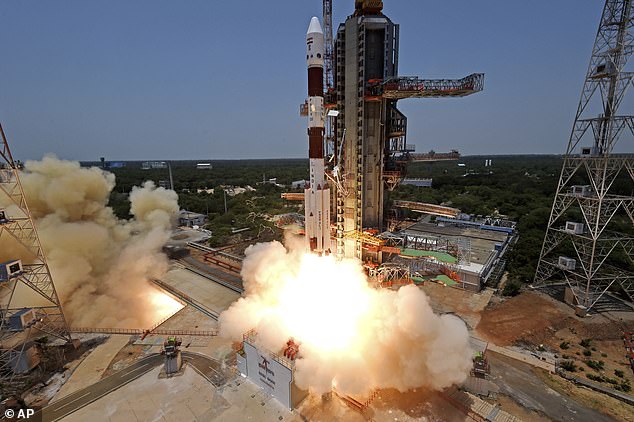
The Aditya-L1 spacecraft lifts off Saturday aboard a satellite launch vehicle from the space center in Sriharikota, India
Named after the Hindi word for the sun, the Aditya-L1 spacecraft took off barely a week after India beat Russia to become the first country to land on the south pole of the moon. While Russia had a more powerful missile, India’s Chandrayaan-3 outclassed the Luna-25 to pull off a by-the-book landing.
Prime Minister Narendra Modi is pushing for India’s space missions to play a bigger role on a world stage dominated by the United States and China. Home Secretary Amit Shah said on social media platform X that the launch was a “gigantic step” towards Modi’s vision.
The Aditya-L1 is designed to travel 1.5 million km (930,000 miles) over four months, far from the sun, which is 150 million km from Earth. It is planned to stop its journey at a sort of space parking lot called a Lagrange Point, where objects tend to stay in place due to the balancing of gravity, which reduces the spacecraft’s fuel consumption.
“We have made sure that we have a unique dataset that is not currently available on any other mission,” said Sankar Subramanian, the mission’s chief scientist.
“This will enable us to understand the sun, its dynamics and the inner heliosphere, which is an important element for current technology, as well as space-weather aspects,” he added.
The mission also has the potential to create a ‘big bang’ in terms of science,” said Somak Raychaudhury, who was involved in the development of some of the observatory’s components, adding that energy particles emitted by the sun will hit satellites. that control communications on Earth.
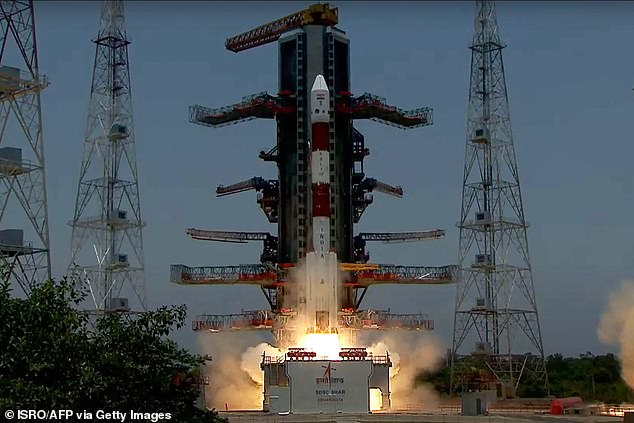
The Aditya-L1 spacecraft lifts off from the Satish Dhawan Space Center in Sriharikota, traveling to the center of the sun
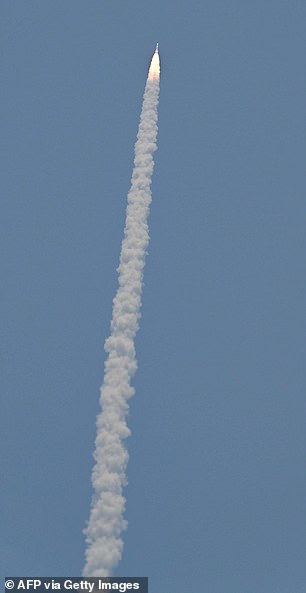
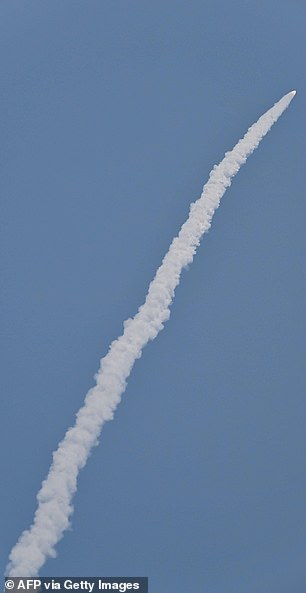
PSLV XL rocket carrying the Aditya-L1 spacecraft, India’s first space-based observatory to probe the Sun, will be launched from Satish Dhawan Space Center in Sriharikota on Saturday.
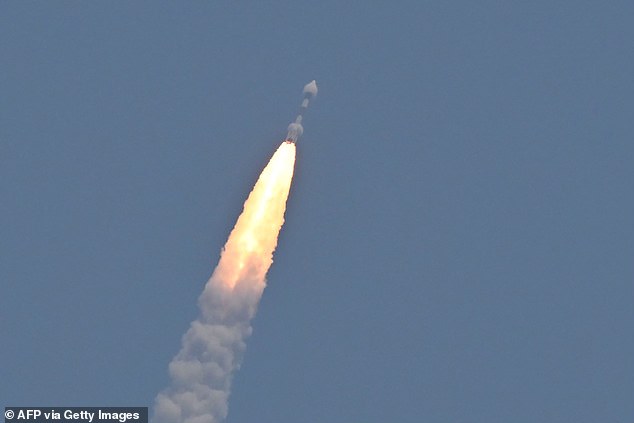
PSLV XL rocket carrying Aditya-L1 spacecraft, India’s first space-based observatory to probe the Sun, launches
“There have been periods when major communications failed because a satellite was hit by a major corona emission. Low Earth orbit satellites are the main focus of global private players, making the Aditya-L1 mission a very important project,” he said.
Scientists hope to learn more about the effect of solar radiation on the thousands of satellites in orbit, a number growing with the success of ventures such as Elon Musk’s SpaceX’s Starlink communications network.
“The low Earth orbit is heavily polluted by private participation, so understanding how to protect satellites there will be of particular importance in current space travel,” said Rama Rao Nidamanuri, head of Earth and space sciences at Earth and Space Sciences.
the Indian Institute of Science. Space science and technology.
Longer term, the mission’s data could help better understand the sun’s impact on Earth’s climate patterns and the origins of solar wind, the stream of particles that flow from the sun through the solar system, ISRO scientists say.
Under pressure from Modi, India has privatized space launches and wants to open up the sector to foreign investment as the country aims to increase its share of the global launch market fivefold over the next decade.
As space travel becomes a global business, the country is also counting on ISRO’s success to demonstrate its prowess in the sector.
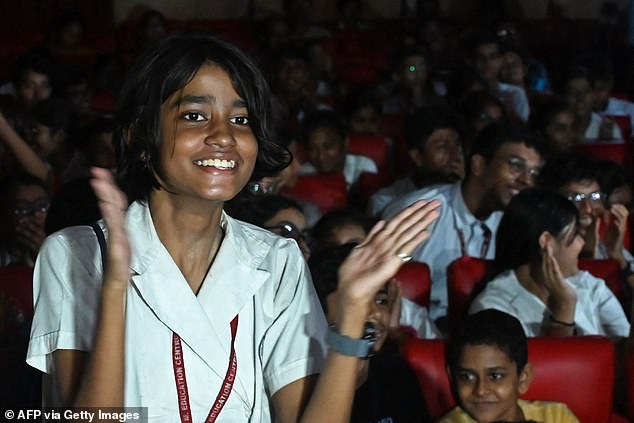
A student celebrates after watching the live stream of the launch of the PSLV XL rocket carrying the Aditya-L1 spacecraft
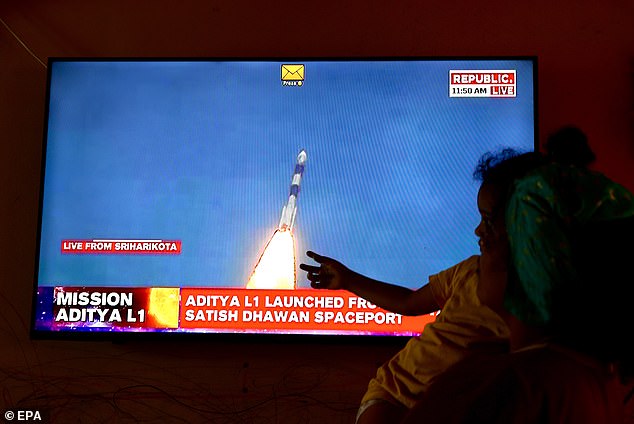
A television recording showing Indian women watching the Space Research Organization’s live coverage showing Aditya L1 payloads rocketing from a launch pad at the Satish Dhawan Space Center in Sriharikota
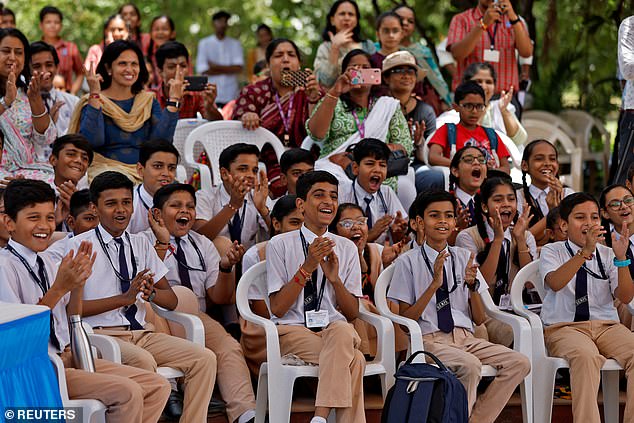
Schoolchildren react as they watch the Aditya-L1 spacecraft launch live
